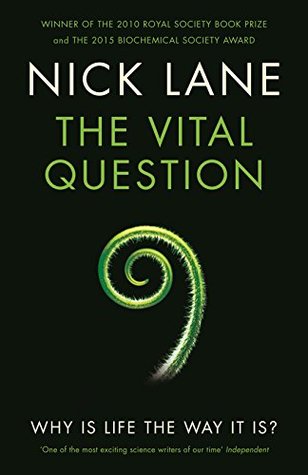More on this book
Community
Kindle Notes & Highlights
The nucleus is an exquisitely adapted structure, no mere repository for DNA. It is composed of structures such as the nucleolus, where new ribosomal RNA is manufactured on a colossal scale; the doubled nuclear membrane, studded with stunningly beautiful protein pore complexes (Figure 26), each one containing scores of proteins conserved across all eukaryotes; and the elastic lamina, a flexible protein meshwork lining the nuclear membrane that protects DNA against shear stress.
consider E. coli. A single cell may contain about 4,000 genes, but the ‘metagenome’ (the total number of genes found in different strains of E. coli, as defined by ribosomal RNA) is more like 18,000 genes.
The spliceosome is a eukaryotic machine based on a bacterial parasite.
Even today, after nearly 2 billion years of evolutionary refinement, they take several minutes to cut out a single intron. In contrast, ribosomes work at a furious pace – up to 10 amino acids per second. It takes barely half a minute to make a standard bacterial protein, about 250 amino acids in length.
That is the whole point of the nucleus: to keep ribosomes at bay.
That is precisely the structure of the nuclear membrane: a series of flattened vesicles, fused together, with the nuclear pore complexes nestling in the interstices.
standard bacterial recombination – lining up chromosomes, loading up missing genes – would ensure that cells tended to accumulate genes and traits.
Sponges, corals and plants, however, can grow new sexual organs producing gametes from many different places.
any genes in male mitochondria that happen to improve male fitness are never passed on.
Recall that the electrical potential across the thin inner mitochondrial membrane is 150–200 millivolts, giving a field strength of 30 million volts per metre, equal to a bolt of lightning.
As noted in the previous chapter, the existence of two sexes increases the variance between female germ cells – different egg cells contain mainly clonal populations of mitochondria, with different eggs amplifying different clones of mitochondria. Some of these clones will happen to work well against the new nuclear background of the fertilised egg, others less well. Those that don’t work sufficiently well are eliminated by apoptosis; those that do work well together survive.
Haldane’s rule Haldane was given to memorable pronouncements, and in 1922 he came up with this remarkable proclamation: When in the offspring of two different animal races one sex is absent, rare, or sterile, that sex is the heterozygous [heterogametic] sex.
The optimal space distribution in aerobic muscle is around a third for myofibrils, a third for mitochondria, and a third for capillaries.
The cost of high aerobic capacity is low fertility. More embryos that could have survived some lesser purpose must be sacrificed on the altar of perfection. We can even see the consequences in mitochondrial gene sequences. Their rate of change in birds is lower than in most mammals (except bats, which face the same problem as birds). Flightless birds, which don’t face the same constraints, have a faster rate of change.
There have been hints from the apparently non-random geographical distribution of different types of mitochondrial DNA in human populations that selection in particular environments might indeed exist, but little more than hints.
A low threshold gives a high aerobic fitness and a low risk of disease, but at the cost of a high rate of infertility and poor adaptability. A high threshold gives a low aerobic capacity and higher risk of disease but with the benefits of greater fertility and better adaptability.
pigeons leak fewer free radicals from their mitochondria than do rats.
mitochondria spend much of their time fusing together and then splitting apart again,
Henry Ford is said to have visited a scrap heap to determine which parts of derelict Fords were still operational, then insisting that, in new models, these pointlessly long-lasting parts should be replaced with cheaper versions to save money. Likewise, in evolution, there is no point in maintaining a large and dynamic population of stem cells in the stomach lining if they are never used, because our brains wear out first.
you pump 1021 protons per second, every second, without pause. Your mitochondria were passed on from your mother, in her egg cell, her most precious gift, the gift of living that goes back unbroken, unceasing, generation on generation, to the first stirrings of life in hydrothermal vents, 4 billion years ago.


